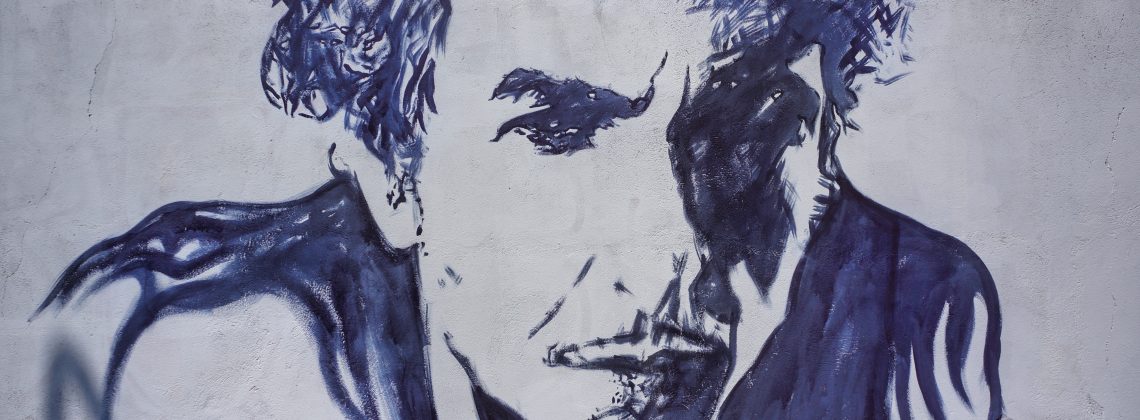

If you have not seen A Complete Unknown, the new Bob Dylan biopic starring Timothée Chalamet as Dylan, I cannot recommend it highly enough. It is a brilliant piece of filmmaking with outstanding performances by Chalamet, Edward Norton, and Elle Fanning.
There is much to say about the film, but I will concentrate on one theme. The film covers Dylan’s first four years or so of prominence. The story commences in 1961 when he first comes to New York and is, in fact, a complete unknown. The film culminates in his (in)famous performance at the Newport Folk Festival in 1965, by which time he has reached superstardom and is the already being lauded as the voice of a generation.
One cannot help but notice the presence of both Pete Seeger (Edward Norton) and Woody Guthrie (Scoot McNairy) in the film. The film largely glosses over the Communist ties of both men. Gutherie, for example, famously had a guitar emblazoned with the phrase “This machine kills fascists.” That wasn’t always Guthrie’s position. Like most American Communists, Gutherie defended Nazi Germany in the wake of the Molotov-Ribbentrop pact, opposing United States support for the Allies early in the Second World War. He only changed his mind in 1941 when Hitler violated the pact by invading the Soviet Union.
Seeger is an almost entirely disreputable character. Suffice to say he was, almost to his dying day, an unrepentant Stalinist. See here and here. Celebrating Pete Seeger is like being a fan of a neo-Nazi simply because he picks a mean banjo.
The first link above, penned by Howard Husock, calls Bob Dylan a Che Guevara to Seeger’s Lenin (yes, a bit of a mixed Communist metaphor). This seems inaccurate (as Husock, commenting on A Complete Unknown, tacitly acknowledges). And this is what makes A Complete Unknown interesting.
A recent Jordan Peterson podcast with The Chosen creator Dallas Jenkins contains an enlightening discussion on the relationship between art and propaganda. Peterson considers why he enjoys The Chosen when he normally doesn’t like religious shows. His reason for disliking most religious popular art is that it is, simply, bad. It is bad because it tends to be essentially propagandistic. The stories are simplistic, with easily discernable good guys and bad guys. Peterson, a self-proclaimed student of Soviet propaganda, likens the two kinds of bad art, that of today’s Christian art and yesterday’s Soviet agitprop, in that the art is subservient to the message. In other words, Soviet art was bad because beauty took a backseat to a political agenda.
Jenkins’s The Chosen succeeds as art precisely because he puts telling a good story above proselytizing. People without any Christian commitments still enjoy The Chosen regardless of its religious content (I personally know people who are not Christians for whom The Chosen is their current favorite television show).
In A Complete Unknown, Dylan, under the influence of Seeger and his girlfriend Sylvie Russo (in real life Suze Rotolo, herself the daughter of Party members), gets a political edge to his songs. In the film songs like “Masters of War,” “Blowin’ in the Wind,” and “The Times They are A-Changing” figure prominently is demonstrating Dylan’s rising political awareness.
It is in the performance of “The Times They Are A-Changing” that the film takes a turn. As Chalamet’s Dylan plays the song, Seeger sits in the wings nodding his head. The crowd sings along to the song’s title each time it comes around. Seeger is proud that he has groomed Dylan into being a good soldier in the Revolution. Dylan, meanwhile, gazes out at the audience cheering him on for having the “correct” message. A look of hesitancy mixed with contempt crosses his face. Dylan is not interested in being a soldier in any man’s army.
In the film’s telling, this may be the linchpin that causes Dylan to break with the folk movement and drift in the direction of what became known as folk rock. This culminates in his famous plugged-in electric performance at Newport in 1965. While the film exaggerates the violence of the reaction, there is no doubt that Dylan was seen as a traitor to the cause. Their cause was politics. His cause was music.
It is notable that since that time Dylan has largely left politics behind in his music. With the exception of the pro-Israel “Neighborhood Bully,” it’s difficult to name an overtly political song in Dylan’s post-1965 lexicon. Even the song “Political World” has no discernible ideological content, meaning the song does not tie Dylan to any particular message or “team.”
The film signals the triumph of art over politics. To that extent, it is a triumph of beauty over power. The old saying is “show, don’t tell.” If you want to depict someone as courageous, you don’t call him or her courageous. Instead, you have the character do courageous things. An evil character is developed by having the character do evil things, not simply by calling him or her evil.
Many artists, even those of good will such as Christian artists, make this mistake. They are heavy handed. They let the message get in the way of good storytelling. A Complete Unknown is successful as storytelling not because Dylan makes the right political move, namely distancing himself from the Stalinists in the folk movement. It is successful in that it takes compelling characters, characters we care about, and places them in a plot that shows those characters grappling with important decisions. The Dylan character grows throughout the film, often making unpredictable decisions.
This is Jordan Peterson’s critique of propaganda, again even if it is propaganda for something edifying. Propagandistic story is uncompelling because you know how it is going to end. The characters and the plot are stock, off-the-shelf caricatures. Say what you want about Dylan, but for better or worse he’s never been predictable.
For good storytelling, and good storytelling about storytelling, go see A Complete Unknown.